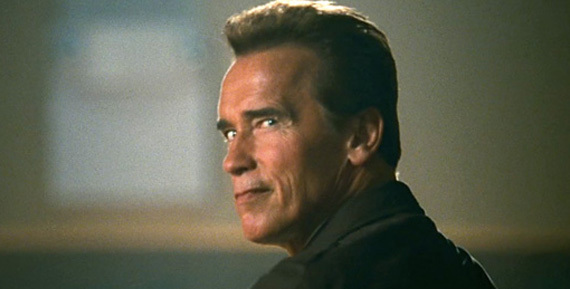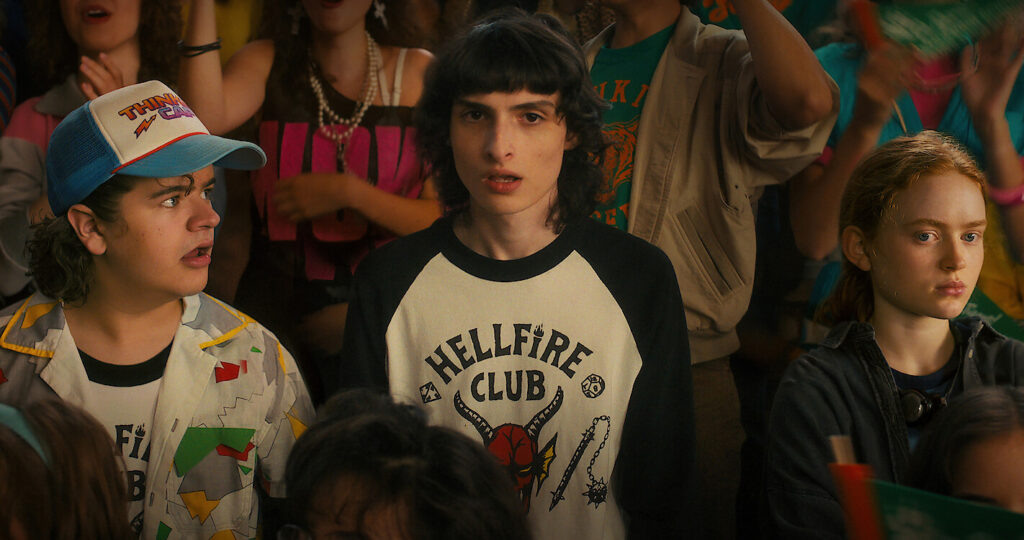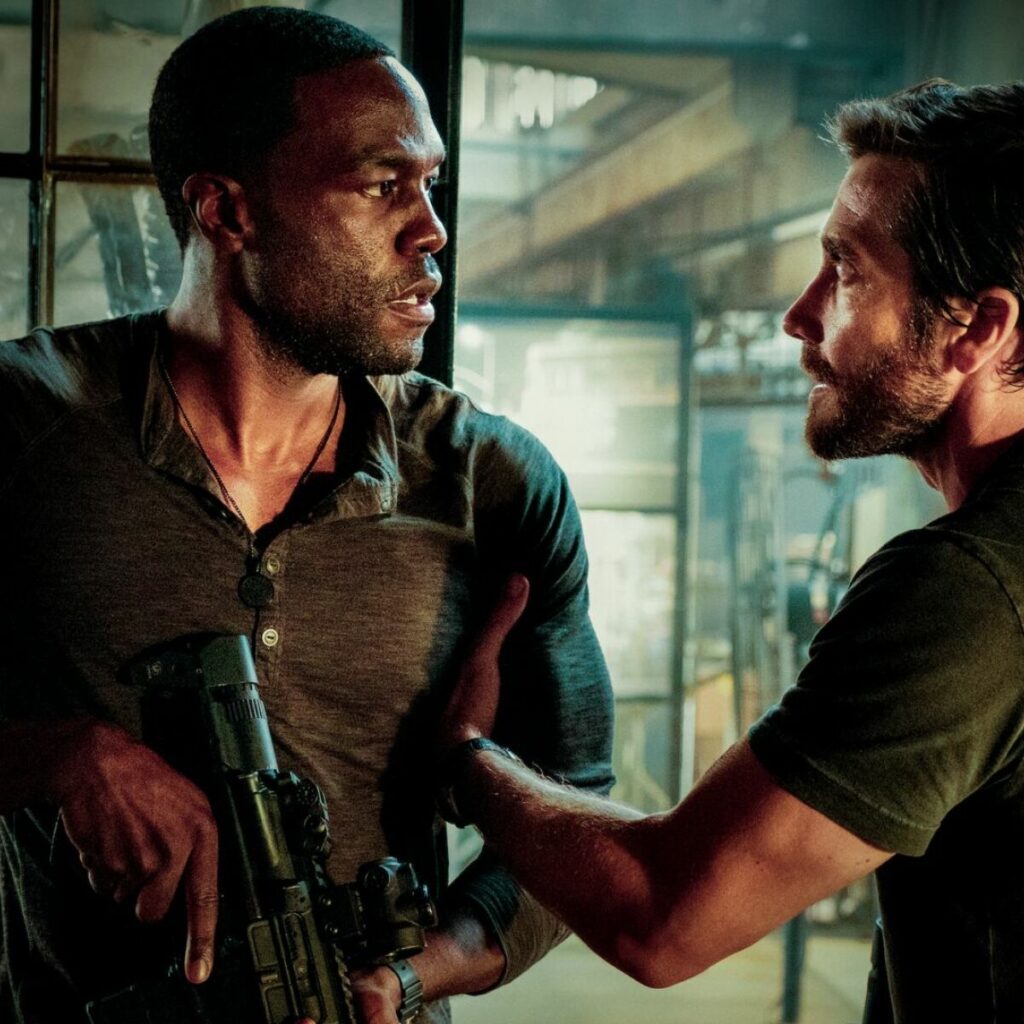Today we’ve got Get Out meets Rosemary’s Baby meets The Stepford Wives.
Genre: Horror
Premise: A pregnant couple hoping to start their family in the suburbs find themselves embroiled in a decades long mystery which threatens to shatter their American dream.
About: Today’s writers are two of the few on the latest Black List to have a produced credit. They wrote Scouts Guide to the Zombie Apocalypse, in 2015, which, if I remember correctly, I liked.
Writers: Emi Mochizuki & Carrie Wilson
Details: 108 pages

I’ve been thinking a lot about character this week and a common mistake we writers make when it comes to the creation of our characters. There are basically two types of characters in a script. There are the main characters, typically 2-3 in every movie. And then everyone else – the periphery characters.
What I’ve realized is that writers often do a good job with their secondary characters but a lousy job with the main ones – the reason being that a secondary character doesn’t have to be complex. Which allows the writer to create somebody with a much clearer identity. The school bully, the stuck-up judgmental wife, the aging mother who will never be happy until her daughter gives her a grandchild, the over-exerciser, the spiritual hippie.
I’ll read these characters and immediately understand who they are.
Meanwhile, main characters are more nuanced. They have more going on. Which, in theory, is a good thing. But often writers will lean too heavily into that nuance and never actually convey what the core identity of that character is. And therefore we never get a feel for them.
John McClane’s core is a tried-and-true New York cop who doesn’t play by the rules. Arthur Fleck’s core is a guy who just wants to be accepted by the world. In my new favorite show, The Bear, the main character’s core is a workaholic who is determined to succeed at all costs.
Yes, main characters are nuanced. They’re complex. But you still have to give them that core identity that allows the reader to understand who they are. Cause if you spread their identity across too many plates, we’re not going to know what we’re eating.
I bring this up because I saw a little of this problem in today’s script. Let’s get into it.
34 year old Renee Kim has just gotten pregnant with her husband, Mark. The two are still reeling from a stillborn pregnancy a year ago. So Renee moves forward with caution. Cut to half a year later and Mark’s success at work has allowed them to purchase a house in esteemed Carriage Hill, a community of rich people well outside the city.
Right away, Renee starts seeing weird stuff. There’s this hot chick across the way who likes to jump up and down on her trampoline in her dress… with no underwear on. There’s also single Phoebe, a hot mamajama who’s not actually a mama, but someone who’s just really good at flirting with husbands.
Renee and Mark become fast friends with their neighbors across the street, Trevor and Zoe. Zoe, like Renee, is pregnant, which gives Renee someone who knows what she’s going through. Well, that is until one night when Renee sees a naked Zoe across the street in the window with some kind of weird collar on. Freaked out, Renee tells her husband, but he just assumes they’re into kinky sex.
Things get weirder when Zoe disappears. She leaves a text to Trevor that she’s found someone new so sayonara. Renee is not convinced. Not only are Zoe and her soon-to-be-born baby gone, but come to think of it, there aren’t any babies in Carriage Hill. There aren’t any KIDS in Carriage Hill.
As Renee’s delivery date approaches, she becomes convinced that this Carriage Hill place steals babies and does something to them. She alerts the police, who inform her that Carriage Hill used to be a hippie compound in the 70s until a fire burned it all down, killing many of the inhabitants. Renee thinks she’s put the puzzle pieces together to know what’s going on. But she starts to doubt herself because… well because Carriage Hill can’t possibly be inhabited by ghosts, can it?
I know we were talking about character introductions the other day. But we were doing so in the context of, “This is a bad character introduction.” The reality is that an AVERAGE character introduction is almost as bad as a bad one.
Here’s how Renee is introduced: “Effortlessly elegant and a natural beauty, RENEE KIM (34)…”
You may look at this and say, “Eh, it’s not bad, Carson.” And you’d be right. It isn’t bad. It’s average. Let me key in on a very important point when it comes to describing characters. If you only give us generalities, we will perceive your character in a GENERIC manner.
GENERALITIES = GENERIC
“Effortlessly elegant.” That *does* give me information. But it’s a phrase I’ve read hundreds of times before. Which mean this character is now being lumped into that giant group of generic characters in my head who were described the same way. Same thing with “natural beauty.” I’ve read that phrase more times than I can count.
This isn’t hard, people. Find ONE SPECIFIC THING about your character you can key in on and describe that via phrasing that’s different from what people typically use. That’s going to help your character intro stand out, and therefore, your character stand out.
I know it’s a book but in Gone Girl, here’s Gillian Flynn describing the female cop who comes to the house after Amy’s disappearance: “The woman was surprisingly ugly — brazenly, beyond the scope of everyday ugly: tiny round eyes set tight as buttons, a long twist of a nose, skin spackled with tiny bumps, long lank hair the color of a dust bunny.”
When you are specific, the character becomes special in the reader’s head. The reader can imagine them, see them as a real person.
SPECIFIC = SPECIAL
Let’s stop making the mistake of describing characters with generalities and platitudes (“a bear of a man”).
Okay, onto the script. When it comes to scripts like this, there’s a decision that needs to be made. Are you going to stick to some level of reality? Or are you just going to go completely nuts and include whatever weird idea pops into your head.
I prefer when writers stick to reality as much as they can. Because reality is scarier. And, if they do include supernatural or sci-fi stuff, do so in the context of making it as believable as possible.
I thought Don’t Worry Darling did a good job of this. Some really crazy things happen in that script. But there was always an underlining design to it all. I think what I dislike most is when things get so chaotic that I no longer feel like I’m reading a well thought out story, but rather a writer who’s throwing every idea at the wall.
Which is how this reads. I mean, one second, we’re watching this gorgeous naked woman. The next second that same woman is 100 years old. It’s a creepy image but I wasn’t clear on how their body changed.
We’re got the hippie compound. We’ve got underground tunnel systems. We’ve got everybody under the sun acting bizarre.
I didn’t dislike it but I guess, at a certain point, I could no longer suspend disbelief. There were too many things to keep track of. And I get the conundrum of being the screenwriter in this scenario. You want to keep giving the reader the fun that they came for, so they’ll want to keep turning the pages.
But part of being a good screenwriter is trusting that you can hold the reader’s attention through those slower parts of the story. Sure, I could have a superhero show up in my script on page 10 and then Rome blow up on page 20 and then inter-dimensional aliens arrive on page 30 — I’m giving the reader plenty of reasons to keep turning the pages. But at what cost? At the cost of them not taking the story seriously, which eventually ends in them in disengaging.
Carriage Hill is a fun little script. I just wanted to believe what was happening more. It all got a little too goofy for me.
[ ] What the hell did I just read?
[x] wasn’t for me
[ ] worth the read
[ ] impressive
[ ] genius
What I learned: If there’s one thing that drives me crazy, it’s when the writer describes the main character generically, but then gives some secondary character a well thought out detailed character introduction. I’ll never understand that. Here’s a description of the Carriage Hill manager: “Real estate agent NANCY TALBOT smiles like a game show host. Dressed in a vintage Diane Von Furstenburg wrap dress, she’s in her forties, but could pass for thirty.” Why wasn’t this level of detail used for Renee????
This isn’t just nit-picking, by the way. One of the most important things in a screenplay is our connection with the main character. The better we know them, the more invested we will be. So you want to do everything in your power to connect us to them. And the character intro is the first of many important steps a writer uses to achieve that.
What I learned 2: If you want to have a pregnant character in your screenplay, we should either meet them when they’re 8+ months pregnant, or, if you show them get pregnant, you want to do a TIME JUMP to 6, 7, 8 months later. And you want to do that time jump as early in the screenplay as possible. Cause you want to start the ticking time bomb to the baby’s birth. You can’t do that if the movie starts with the character at 2 months pregnant and you gradually tell the story over the next 7 months until they conceive. There won’t be enough urgency. There are exceptions to this (Rosemary’s Baby) but for the most part, it’s a good rule to follow.
Genre: Drama/Action/WW2
Premise: At the tail end of World War 2, a German war hero is tasked with exterminating 8000 American POWs… but instead helps them escape.
About: Today’s screenplay takes us back to the fruitful screenwriting decade that was the 1990s. Randall Wallace was one of the hottest screenwriters in the world. Just two years previous, in 1995, his movie, “Braveheart,” would capture audiences everywhere and go on to win the Oscar for Best Picture. Today’s 1997 Wallace script had Arnold Schwarzzeneger eagerly ready to commit. However, after Arnold changed his mind, the project never picked up enough steam again to make it to the finish line.
Writer: Randall Wallace
Details: 109 pages

Randall Wallace remains one of the most perplexing screenwriters ever.
He wrote one of the most celebrated, quoted, and memorable war films of all time in Braveheart. But he’s never written anything good since. After Braveheart, which came out in 1995, he got the opportunity of a lifetime in writing The Man In The Iron Mask. That movie, which starred Leonardo DiCaprio, came out on the heels of the most successful film in history, Titanic. It was the biggest box office sure thing that you could’ve attached yourself too, and it was a gigantic bust.
Next up came Michael Bay’s attempt to be taken seriously with Pearl Harbor. That movie, starring an overly eager but still raw Ben Affleck, was also a disaster. Wallace got one more chance to bat, agreeing to write Mel Gibson’s “We Were Soldiers.” But that movie was quickly forgotten almost as soon as it came out.
Wallace hasn’t written any movies since. And the reason I seem so flustered chronicling that reality is because I have this irrational fear that writers only get lucky once. They only have that one story that they perfectly connect with and are able to tell spectacularly, whereas everything else they write is average muck.
This isn’t true, of course. There are plenty of examples of writers who’ve written multiple great screenplays. But Wallace certainly isn’t helping me overcome my fear.
The year is 1944 and things are NOT looking good for the Germans. They’ve already started recruiting 16 year olds into their military ranks. Despite that, Hitler refuses to give up, and any German who even whispers that Germany could lose the war is executed on the spot.
One of the Germans’ last hopes is Nicholas Von Ostermann, a colonel of the Black Eagles, one of the most ruthless special units in the German army. Ostermann is notorious for going into battle against impossible odds and coming out alive.
Ostermann has a 12 year old son, a wife, and a polio-stricken brother, Reinhold, who’s a preacher. Reinhold is secretly working with a military unit to assassinate Hitler before all that’s left of Germany is ashes.
Despite Russia closing in on every front, Ostermann is determined to protect his country and heads north to stop the Russians from invading Berlin. He succeeds but in the process is shot and killed. Or so we think. Ostermann wakes up in some field being mass-buried with other deceased German soldiers. Ostermann kills the Russians, steals their truck, and drives home.
But he gets home to a Berlin that’s being bombed to smithereens. And his poor son is dead. Like REALLY dead. Although devastated, Ostermann is immediately ordered to travel to a POW camp that’s holding 8000 captured American bombers and then exterminate them. I didn’t know it was possible to capture that many bombers but okay.
Once there, Ostermann realizes he doesn’t want to kill anyone anymore. So he tells the prison brain trust that he’s going to separate the strong from the weak. He’ll tell the strong soldiers he’s rescuing them, but really, he’s leading them to an ambush where they’ll be wiped out. From there, they’ll slaughter all the weaker soldiers without any resistance.
But his real plan is to sneak a bunch of guns out with the Americans, and when they encounter the Germans, they’ll kill them all, and then make a run for the border, where American forces will be waiting. What makes things interesting is that the Americans don’t exactly trust this guy. So they have to decide if they should kill him the second they’re free. What will happen? I don’t know but I’m guessing a lot of chaos is going to be involved!
I’m trying to figure out how this script was put together. Because I get the sense it was majorly over-developed, with Wallace taking on and trying to incorporate a bunch of conflicting notes. This can happen during any development process. But it was especially prevalent in the 90s when there was a ton of money in development, and studios would put screenplays through the meat-grinder in search of creating that perfect link of screenplay sausage.
The script starts off with this German officer randomly running around Germany getting into conflicts. There’s no real direction to the story. It’s not bad. Wallace is a solid writer and every page reads well in a vacuum. But at one point, Ostermann dies, and then he comes back to life, and then he runs back to Germany, but literally the second he gets there, his town is bombed and his son is killed. It’s like we’re in a salt shaker and the writer can’t stop shaking it.
There are a lot of discussions with his brother, who’s an interesting character, but who, if we’re being honest, has no reason to be in the movie. This is where Hollywood seems clueless at times. You can get hung up on a cool character (he’s got polio! An actor will love to play him!). But everything interesting this character does, like put together a plan to kill Hitler, happens off-screen. He’s nowhere near the main plot.
The film eventually focuses in once Ostermann gets to the POW camp. Finally, we have ourselves a clear narrative. But why all the willy-nilly 40 pages of nonsense to get there? I get that if we see Ostermann’s son die, we’re going to feel more compassion for him than if his son’s death is backstory. But if you’re weighing 40 pages of setup to get that one death? I’m sorry but getting to the meat of the screenplay is way more important.
With that said, Ostermann is a strong character and I understand, from a studio’s point of view, why they made a few of these holding-up-the-narrative choices. At one point, Ostermann dies heroically in battle only to wake up as the Russians are mass-burying truckloads of dead Germans.
I can see an actor like Arnold Schwarzenegger flipping out for that scene. Which is one of the many paradigms of the business of screenwriting. Sometimes you have to detour your entire story to get a cool scene in because the star actor wants it in. As hard as that is for me to accept as a lover of writing, I do understand it from a business point-of-view.
And in Wallace’s defense, he creates two really fun characters here. Ostermann is this war hero who just won’t die. And then the other guy is Crane, the American bomber whose plane crashes and eventually is sent to the POW camp.
I always tell writers how important it is, especially in big movies like this, to give your main characters a whopper of a character introduction. And boy do we get one with Crane. He’s in the back of the bomber plane, watching as all of the bombs are being dropped when, all of a sudden, they get clogged together, in the drop-hole. And the bombs are active! So if they don’t do something fast, their plane will be blown to smithereens.
So Crane leaps on top of these active bombs and starts stomping on them to unclog them. It’s a great scene and immediately makes him a stand-out character.
On top of all this, the script nails one of the Screenwriting 101 tenets, which is to give us a new spin on something familiar. World War 2 scripts are a dime a dozen. But there aren’t many World War 2 movies where the main character is a Nazi. That’s a unique take and immediately makes the script stand out.
I would say that With Wings as Eagles could still be made today. But it needs to better establish what it is – which is basically a prison-break movie – and build its narrative around that from the get-go. Give us an opening scene showing Ostermann kick a$$ on the battlefield. Then have him receive the orders to go to the POW camp. Then cut to the POW camps so we can meet all the American prisoners. Establish all of them. Ostermann shows up. And we’re off to the races.
It’s endlessly annoying reading all these screenwriters overcomplicating their screenplays. It’s what kills 7 out of every 10 scripts I read. Get all the gunk out of the way and just give us a simple narrative with some really great characters and I guarantee we’ll be satisfied.
Despite all this, maybe because I’m feeling that July 4th holiday fireworks goodness exploding around me, I think this is a light “worth the read.” Check it out yourself with the script link NOW!
Script link: With Wings As Eagles
[ ] What the hell did I just read?
[ ] wasn’t for me
[x] worth the read
[ ] impressive
[ ] genius
What I learned: The “Make Up For Lost Time” Character Intro — You already know that when you want to create a strong character, you have to give them a big memorable introduction. However, there’s an even more important time to do this. Let’s say that your story forces you to spend a ton of time setting up your main character, not unlike the way Ostermann is set up here. Then, you only have one scene to set up a major secondary character. In these times, it is ESSENTIAL that you give them a memorable introductory scene because they don’t have the benefit of the audience spending a lot of time with them like they have your main character. That’s why the Crane ‘bomb stomp’ introduction works so well in With Wings as Eagles. Notice they did this in Star Wars as well. They couldn’t introduce Han Solo early. So they needed to give him a big entrance in order to make up for lost time. They did this with him killing Greedo.
 Hey, guys. I’m off for the holiday. But I wanted to give you a venue to talk about the latest Stranger Things episodes. I wish I had more to say about Stranger Things but I’ve always been only a casual fan. I keep trying to binge watch it and while I can always appreciate the show, I have a tough time getting into it for some reason. I still don’t really know why. I think I liked it when it was a simpler show. As its mythology has expanded, I’m just not as invested.
Hey, guys. I’m off for the holiday. But I wanted to give you a venue to talk about the latest Stranger Things episodes. I wish I had more to say about Stranger Things but I’ve always been only a casual fan. I keep trying to binge watch it and while I can always appreciate the show, I have a tough time getting into it for some reason. I still don’t really know why. I think I liked it when it was a simpler show. As its mythology has expanded, I’m just not as invested.
There is a show I HIGHLY highly highly highly recommend – and I’m probably going to do an article about it at some point – which is The Bear. It’s about a rising culinary star who’s forced to take over a beef sandwich joint back in his hometown of Chicago (Wuh-what!) when his father, the owner, dies. You know what it reminds me of? Uncut Gems. It’s got that same frenetic high-stakes move-move-move style. And, of course, I love any opportunity to promote something from my hometown, especially when it’s actually good.
The Bear is on Hulu. At least check out the pilot episode as it’s only 30 minutes. Then let me know what you think here!

Character flaws used to be a giant mystery to me. It was hard to identify them in movies unless they were overtly obvious. If I did identity them, I became obsessed with charting the flaw over the course of the movie and when the character actually overcame it. I wasn’t sure if the character was supposed to overcome the flaw all at once, in the end, or if they should overcome it bit by bit over the course of the story.
I got so frustrated by this process that I actually swore off character flaws. I convinced myself that they were antiquated Screenwriting 101 riff-raff. You didn’t need them. Any character “arc” that occurred in a movie was manipulated by the writer and therefore insincere.
I eventually rebounded back to somewhere in the middle. There are times when you give your characters flaws and times when you don’t. But I think most audiences want to see some sort of change in the main character over the course of the story or else they feel like there was no point to it all. If the main character didn’t learn anything, then why waste our time?
This goes back to the beginning of storytelling where each story needed to have a moral. And, usually, for a moral to occur, the main character would have to learn something. And in learning something, they’d change. Take one of the oldest tales in the book, The Scorpion and the Frog. The frog’s flaw might’ve been that he’s too trusting. The frog then takes the scorpion across the river but the scorpion stings him. The frog has learned a valuable lesson. Not to be so trusting. Unfortunately, he’s got poison in his body so now he’s going to die. But had he miraculously survived, he’d definitely be a little more suspicious of future animals needing his help. Hence, he’s changed.
Imagine that same story but, this time, the scorpion doesn’t sting the frog. They both get to the other side. The scorpion thanks the frog and says goodbye, and they both go on their way. If I’d told you that story, I assume you’d say to me, “What’s the point?” What do you mean, ‘what’s the point?’ They both made it across the river. “Yeah but nothing happened to them.” Right, cause they survived. “But nothing changed.”
That’s the key phrase there. “Nothing changed.” When people read stories, they expect there to be some change from where the story began or else they feel it was a waste of time. Now, while it’s true, you can rely solely on the PLOT for that change, if you’re doing it right, your plot and your main character are so intertwined that one can’t change without the other.
Now that we know why a character flaw is important, how do we create one? Well, I’m going to share a trick to help you find a flaw for your main character every single time. All you have to do is identify what their goal is in the movie and create a weakness within your character that makes it hard to achieve that goal.
For example, let’s say your main character is an up-and-coming golfer and his goal is to win the Masters. Ask yourself, what are some weaknesses that would make it hard for my character to win the Masters?
Well, they could be stubborn. Whenever a coach tries to teach them, our protagonist wants to do it “their way.” That’s their flaw. Another option: they allow their frustration to overcome them too easily, a la Happy Gilmore. Yet another option: they could be more obsessed with the glitz and glamour of being a professional athlete and therefore don’t put in the necessary work, a criticism that tennis star Nick Kyrgios has been labled with.

The good news is there isn’t some bag of 10,000 flaws you have to sift through every time you write a movie. I’d say there are about 15-20 character flaws that get explored in most movies. We’re all basically living the same experiences and, therefore, battling the same flaws.
Let’s look at another potential movie idea.
Two brothers, one who makes his living as a bank manager, the other who’s a long-time criminal. The criminal comes to the bank manager and says he wants to pull off a heist but can’t do it without the brother’s help.
So this one’s a little more complicated because it’s a two-hander and therefore we have to figure out flaws for each character. The way to do this is to identify the goal of each character. Remember, the goal will determine the flaw. The criminal has a simple goal – steal the money. Therefore, what weakness can we give him that’s going to make that as difficult as possible? It could be that he’s greedy. The heist has an “easy money” option and then some bonus money if they want to be more daring. Our criminal fighting that urge to get as much money as possible is how we explore his flaw.
Another flaw is he could be reckless. His style is to take risks. That helps him get more gold out of the pot than the average bank robber. But it also hurts him when the job is more complicated and needs a concise plan.
Now let’s look at the bank manager. At first glance, you might say his goal is the heist as well. But actually, his goal is to help his brother. At least in this movie it is. So if his goal is to help his brother, what weakness can we give him that makes that job as hard as possible?
The first one that come to mind is loyalty. The bank manager is so undyingly loyal to his brother that he’s willing to do whatever it takes to help him succeed. You can already see how this makes for an interesting arc. When things get heavy and the aftermath of the heist turns into chaos (innocent people are killed, the whole city is after them), how much needs to happen before the bank manager does the “right thing” over being loyal to his brother?
I used the template of “Ambulance” for that one so you can check that movie out to see those flaws in action.
Flaws always get a little tricky with two-handers. Because a lot of writers, for whatever reason – maybe it’s laziness – don’t want to do two character arcs. It’s easier to give the major flaw to one character and keep the other character flat. Another thing writers will do is they’ll give one of the characters a flaw that has to do with the goal. And the second character, the one who doesn’t have as big of a goal, they’ll give them a flaw that’s more internal.
They did this in The Lost City, that Sandra Bullock Channing Tatum movie that came out earlier in the summer. The movie follows romance author, Loretta, as she’s kidnapped to South America due to her knowledge of a rare treasure hidden in the South American jungle. Then you have Alan, the doofy model who plays the studly hero on all of Loretta’s book covers. He flies in to find Loretta to rescue her.
What’s interesting about this setup is that the goal isn’t that clear. Loretta has no interest in finding the treasure. She doesn’t even think it exists. She just wants to get out of the jungle and go home. The person who has the real goal here is Alan. He wants to rescue Loretta.
Now that we understand that, we can figure out his flaw. What can be a giant weakness that stands in the way of Alan achieving this goal? Well, what if Alan believes the hype? What if he believes he’s this great adventurer, even though he’s just the physical manifestation of a real hero? His flaw, then, is his inability to accept who he really is. His arc will entail coming to terms with the fact that he’s just a normal person, and only then will he be able to save Loretta.
Loretta’s flaw is trickier because Loretta’s goal is a negative one. She just wants to leave. She wants to go home. So that doesn’t give us a lot of room to create a compelling flaw. Therefore, the writers connected her flaw to her writing storyline instead. Loretta is a romance novelist who doesn’t have any romance in her life. Her flaw, then, is that she doesn’t believe in love anymore. Of course, over the course of the story, she will fall for Alan and believe in love again. Character arc achieved.
I know all of this is kind of confusing but if you remember this one thing, you’ll be able to come up with a strong flaw for your character every time: Figure out which character in the script has the biggest goal. And then give that character a weakness (aka ‘a flaw’) that makes achieving that goal as hard as possible. You have a little more leniency developing flaws for supporting characters if you even want to go there. But with the character who has the biggest goal in the story, that’s the formula you want to use.
So get to it!

Some quick clarification. I had to put up yesterday’s review late. So you can check that out here. I’m moving the Thursday article to Friday. You get to play with the newsletter in the meantime. We’ve got some things that have never happened before in a newsletter. I make a pitch for the next Star Wars show and it only involves Jawas. I recommend a cool new show that I suspect will be the successor to Ozark. I announce some really cool news about Scriptshadow alumnus, Nick Morris. And I take on a screenplay that has an even bigger concept than “Classified.” Can anyone say, “Inception Meets Saving Private Ryan?”
If you didn’t receive the newsletter, e-mail me at carsonreeves1@gmail.com and I’ll send it to you!

